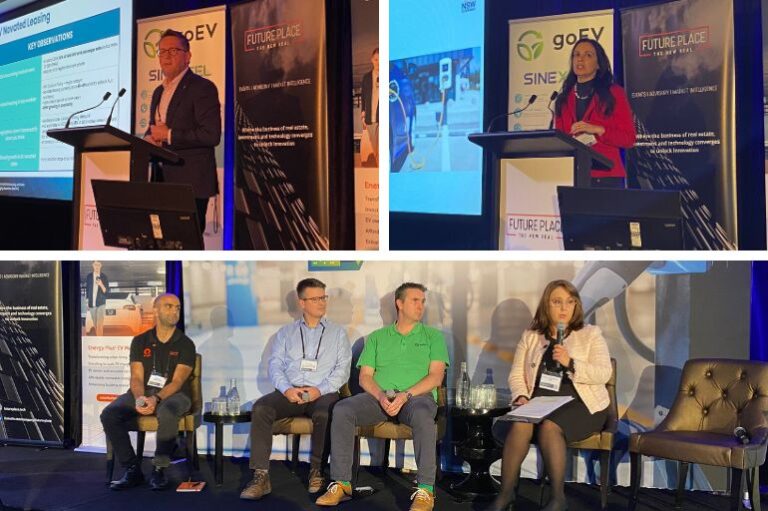Day two of the EV Infrastructure Summit in Sydney focused on the transition of fleets, and the conversation opened promptly with leaders of Australia’s largest fleets discussing the transition they had managed so far and the challenges they are struggling with.
The takeaways from day two of the summit were:
1) Comprehensive planning ahead was vital for a fleet transition;
2) Utilisation data available through telematics was one of the best tools to inform accurate planning;
3) Staff using fleets need to be both consulted and educated as part of the transition process.
Overwhelmingly, the message from these pioneers in EV transition, all grappling with many hundreds of vehicles, was twofold: It is essential to engage in thorough planning with your transition, including with your vehicle users, and that it’s important to start now.
Vince White, General Manager at QFleet for the Queensland Department of Energy and Climate was the first to emphasise the importance of a fleet transition plan. With over 11,000 vehicles in the Queensland fleet, and a goal of 3,000 vehicles transitioned to electric by 2026, the task is significant. In addition QFleet has a mandate to drive consumer EV uptake, and encourage public charging rollout throughout the state.
White pointed to data from government fleets as being essential for the development of clear transition planning, and the clarity of planning for the success across various government agencies. When questioned on what were the greatest challenges for a commercial fleet, White didn’t hesitate to point to issues with fire safety certification, citing one $10 million government building which was quoted $3 million worth of fire safety upgrades to be compliant for basement EV charging.
Rohan Martin, the CEO of the National Automotive Leasing and Salary Packaging Association (NALSPA) pointed to the July 2022 FBT exemption as the point at which novated leasing of BEV and PHEV took off in Australia, a continuously increasing trend. He too pointed at comprehensive transition planning as being essential, saying, “Planning is fundamental, in terms of infrastructure, what fleets want to achieve, and by when.”
Fleet drivers were again highlighted, as needing the tools to transition, with education on charging and driving EV’s essential to give them a sense of security with the change.
Later in the day, David Helmy, Head of Sales e-Mobility for Origin Energy, opened with an important statement – when we institute a new computer system in a business environment there is a change management process, and this is a process often being overlooked in the transition of fleet drivers to electric.
As part of a panel discussion, Steve Ellis, Fleet Operations Manager at Telstra, mentioned the growth they saw from 48 novated lease EVs to 608 post FBT exemption.
As one of the largest fleets in Australia, Telstra have encouraged staff uptake of EVs through salary sacrifice, with public charging being the main charging solution used. Rolling home charging into the lease arrangement was proving to be an insurance issue, said Steve.
The panel agreed that “right-sizing” a fleet was of paramount importance, shrinking the number of vehicles and optimising utilisation of those remaining before looking to convert. Encouraging public or active transport use amongst staff, holding online meetings, and encouraging working from home were discussed as other less obvious ways for a business to cut emissions.
Thundergrid CEO, Jonny Parker, shared learnings from New Zealand, where 83% of the energy grid is renewable, and imported fuels accounted for $9 Billion of NZ expenditure, representing a massive opportunity for not only dollar savings, but also fuel security. However he also noted that the recent change of government in NZ had slowed the transition considerably.
Once more planning was highlighted as the best tool for fleet transition managers to reduce the risks of transition, both in reducing interruptions to operations, budget impacts and to not overcapitalise on infrastructure investment.
Anna Martinis, Manager – Electric Fleets and EV at NSW Department of Climate Change, Energy, the Environment and Water, shared findings from their fleet transition projects, where obstacles were often found to be uncertainty about charging and vehicle options, and electrical constraints in depot locations. She emphasised the importance of energy efficiency as the ‘first fuel’ of transition, and demonstrated how managed charging was able to spread loads across non-peak periods, making the most of what energy capacity was available, and when. In a recent AFMA study, only 17% of fleets with EVs were currently using some form of load management.
David Helmy of Origin made another unique point in noting that EVs change how fleet maintenance is managed, where historically these things were run on schedules of time or engine hours, he noted that “EV’s will tell us what they need and when they need it”
Mark Lampard, Managing Director at goEV, a supplier of charging hardware, urged fleet managers to be aware that vehicles will be delivered a lot faster than charging hardware could be installed, particularly in cases where network upgrades were needed, which was a process that could take years.
In all, the takeaways from day two of the summit were that comprehensive planning ahead was vital in fleet transition, that utilisation data available through telematics was one of the best tools to inform accurate planning, and that staff using fleets need to be both consulted and educated as part of the transition process.
Fleet managers and charging industry professionals were encouraged by the number of success stories being told on the day, and far from a theoretical discussion, all were delving into very practical conversations, from where their own fleet transition was surmountable.






